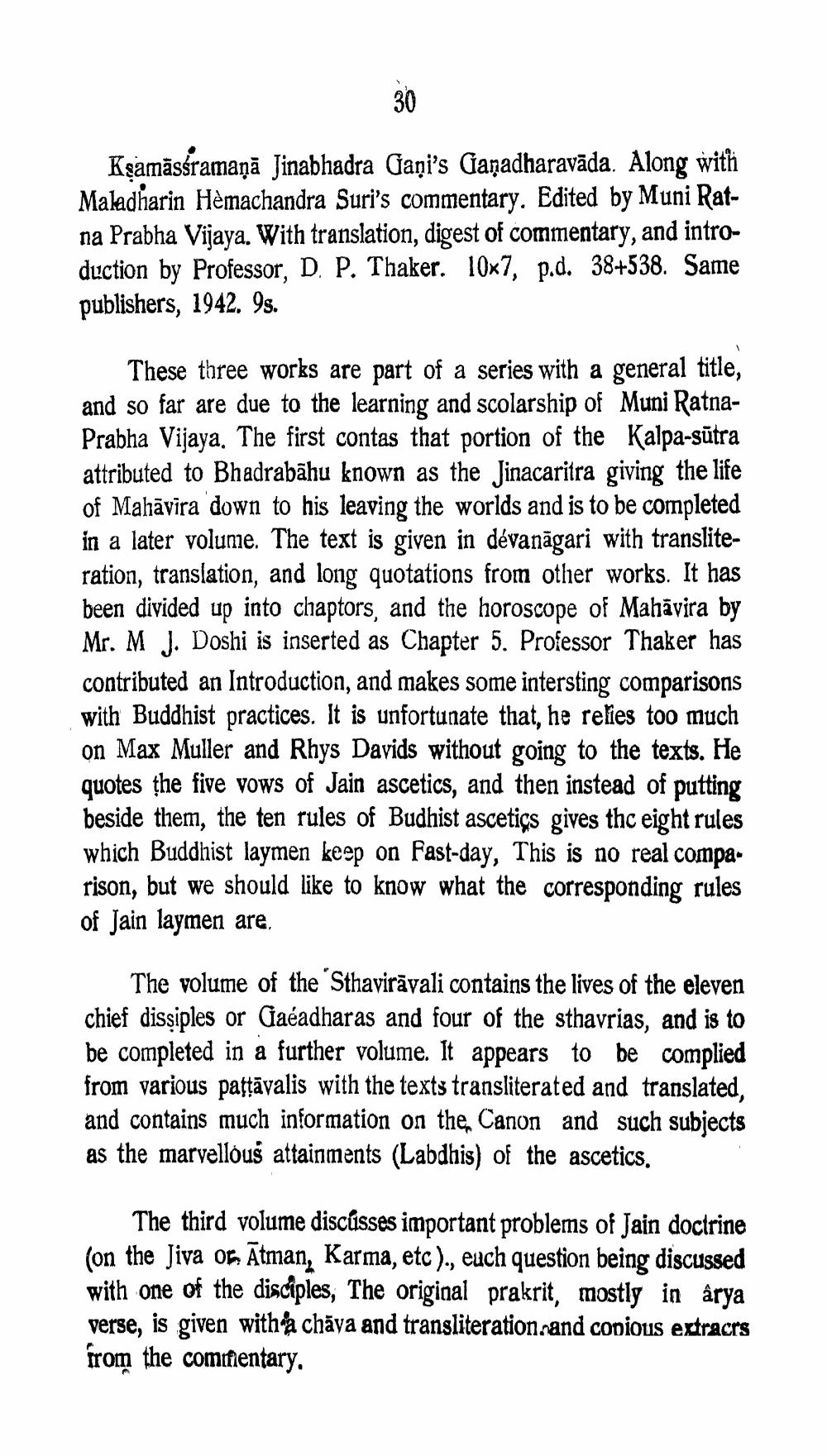________________
Kşamāsśramaņā Jinabhadra Gaņi's Gañadharavāda. Along with Maladharin Hemachandra Suri's commentary. Edited by Muni Ratna Prabha Vijaya. With translation, digest of commentary, and introduction by Professor, D. P. Thaker. 10x7, p.d. 38+538. Same publishers, 1942. 9s.
These three works are part of a series with a general title, and so far are due to the learning and scolarship of Muni RatnaPrabha Vijaya. The first contas that portion of the Kalpa-sūtra attributed to Bhadrabāhu known as the Jinacaritra giving the life of Mahāvīra down to his leaving the worlds and is to be completed in a later volunie. The text is given in devanāgari with transliteration, translation, and long quotations from other works. It has been divided up into chaptors, and the horoscope of Mahävira by Mr. M J. Doshi is inserted as Chapter 5. Professor Thaker has contributed an Introduction, and makes some intersting comparisons with Buddhist practices. It is unfortunate that, he relies too much on Max Muller and Rhys Davids without going to the texts. He quotes the five vows of Jain ascetics, and then instead of putting beside them, the ten rules of Budhist ascetics gives thc eight rules which Buddhist laymen keep on Fast-day, This is no real comparison, but we should like to know what the corresponding rules of Jain laymen are
The volume of the Sthavirāvali contains the lives of the eleven chief dissiples or Gaéadharas and four of the sthavrias, and is to be completed in a further volume. It appears to be complied from various parțāvalis with the texts transliterated and translated and contains much information on the Canon and such subjects as the marvellous attainments (Labdhis) of the ascetics.
The third volume discusses important problems of Jain doctrine (on the Jiva of Ātman, Karma, etc)., euch question being discussed with one of the disciples, The original prakrit, mostly in arya verse, is given with a chāya and transliteration and copious extracrs from the comifentary.




